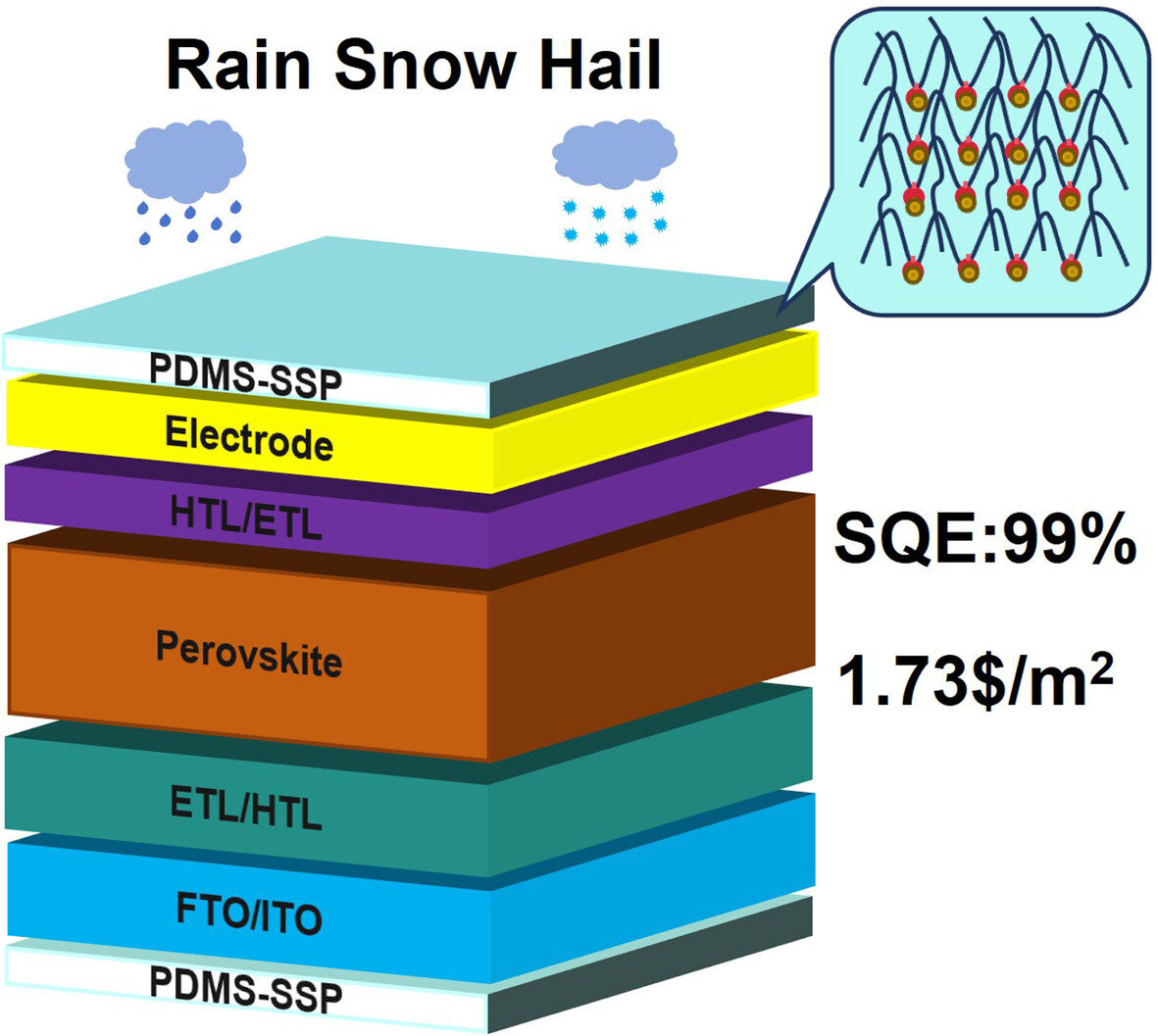Articles
A universal reverse-cool annealing strategy makes two-dimensional Ruddlesden-popper perovskite solar cells stable and highly efficient with Voc exceeding 1.2 V
- First Published: 13 November 2024
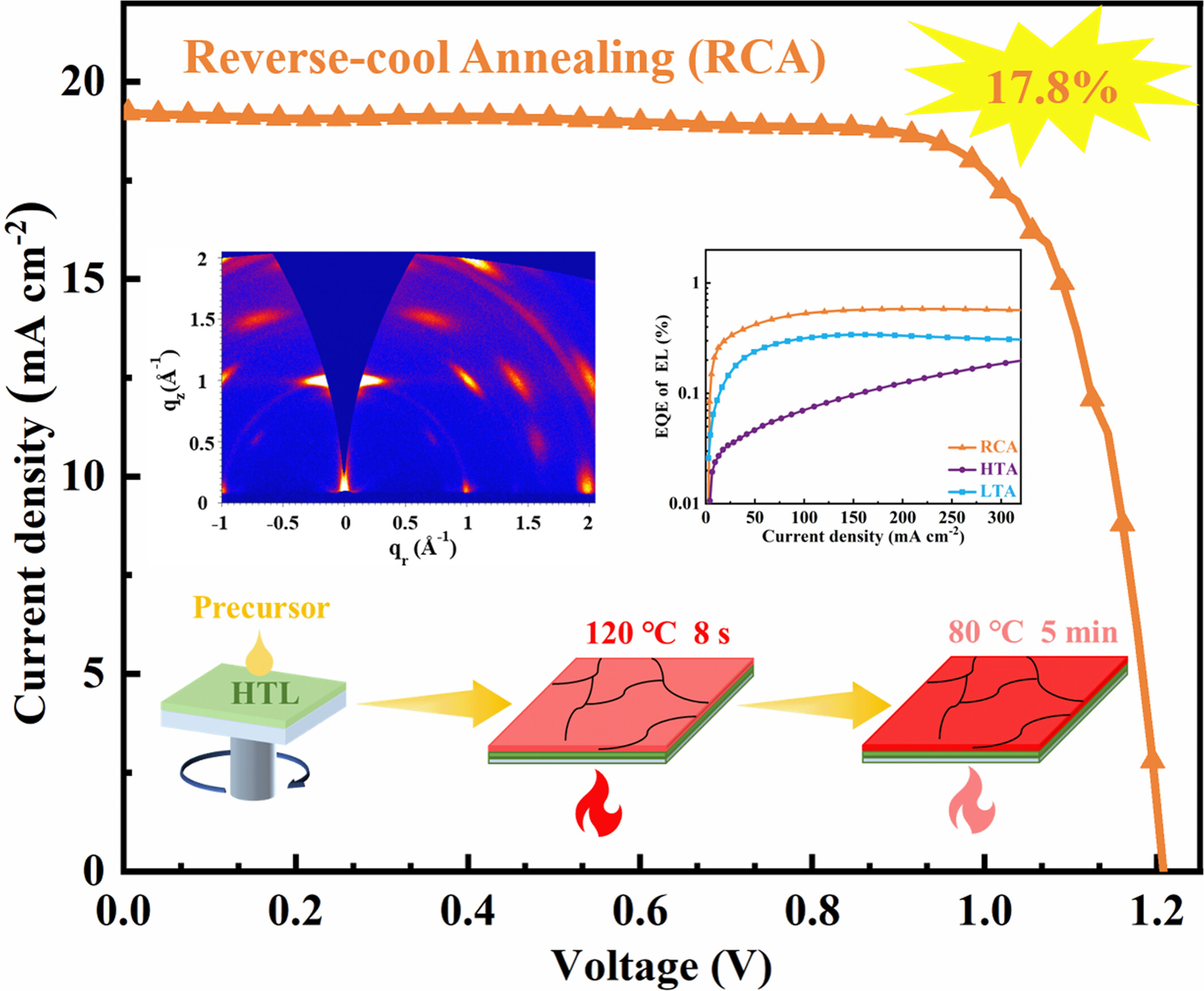
High-quality 2D RP perovskite film grown along the out-of-plane direction is fabricated by the reverse-cool annealing strategy. 2D RP perovskite solar cells show high charge carrier extraction efficiency and small non-radiative open-circuit voltage loss. The champion efficiency of solar cells achieves 17.8%, which sustains 97.4% of the initial efficiency after 1000 h under the N2 environment.
Enhancing FAPbI3 Perovskite Solar Cell Performance and Stability Through Bespoke Graphene Quantum Dots
- First Published: 04 December 2024
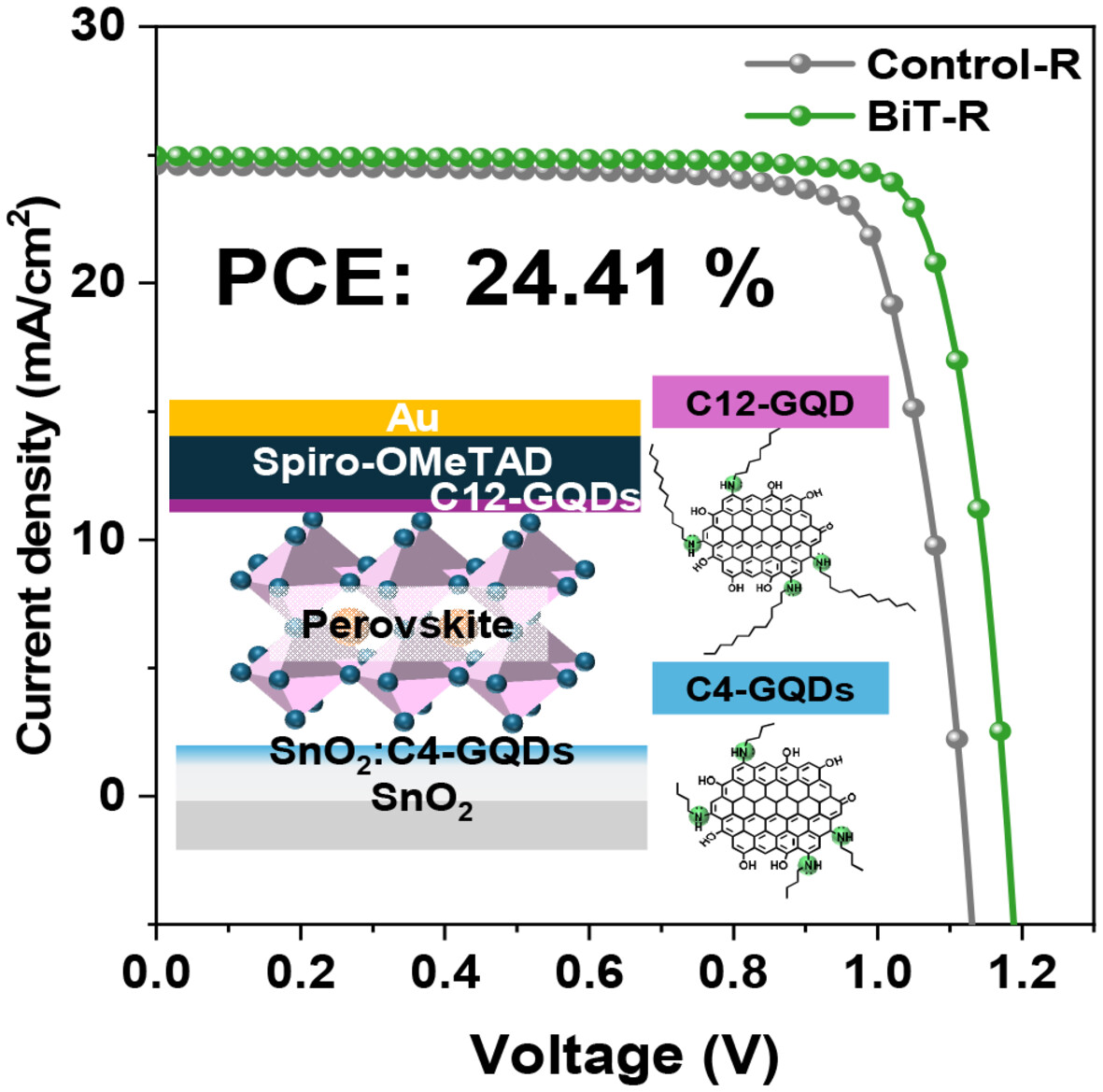
The figure highlights the interfacial engineering of perovskite solar cells (PSCs). Graphene quantum dots (GQDs) with different alkyl lengths adjust the energy level alignment at the SnO2/perovskite interface or passivate the perovskite/HTL interface. Interface-engineered PSCs exhibit high conversion efficiencies due to the collaborative effects of efficient charge transfer and reduced trap density.
Erbium chloride-mediated nucleation/crystallization control for high-performance tin-based perovskite solar cells
- First Published: 30 October 2024
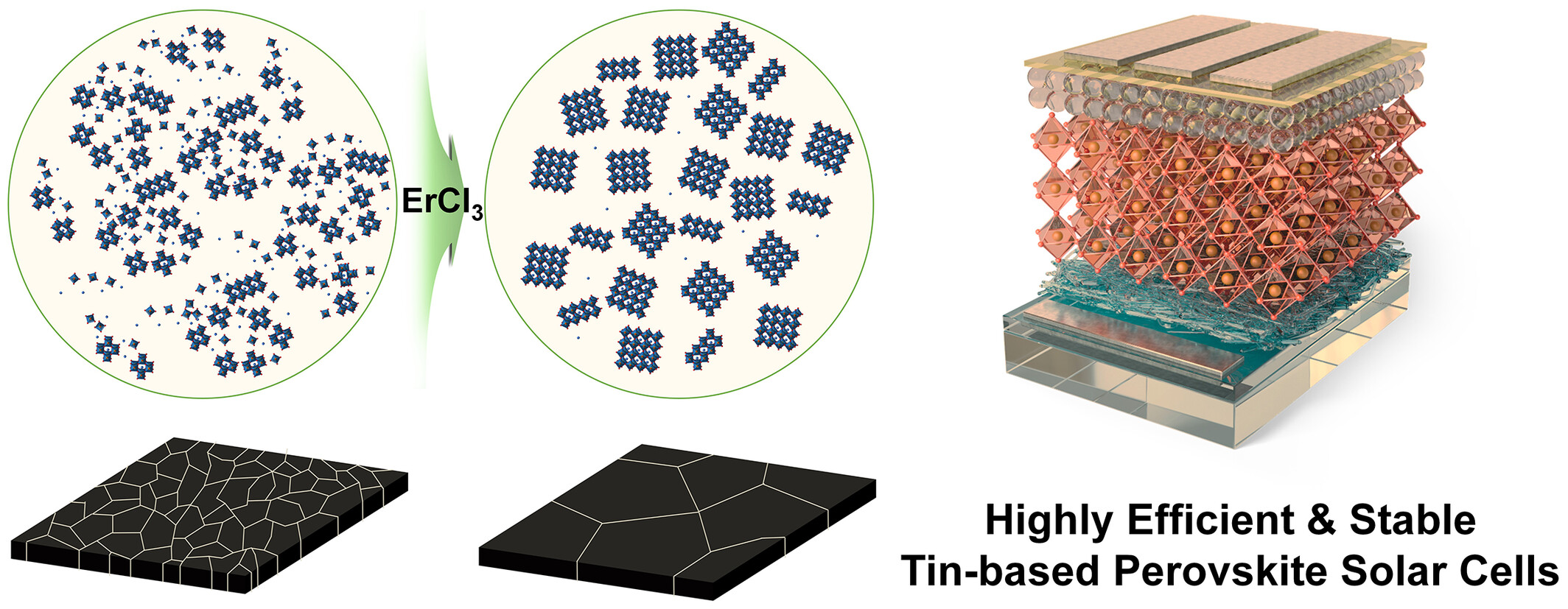
The study demonstrates that the incorporation of erbium chloride (ErCl3) into tin-halide perovskite solar cells (THPSCs) effectively controls nucleation and crystallization, resulting in improved film morphology. This approach significantly enhances the efficiency and stability of THPSCs, leading to higher open-circuit voltage (VOC) and power conversion efficiency (PCE) compared to traditional devices.
Minimizing perovskite solar cells' lead leakage with a cost-effective and 160 days stable encapsulant
- First Published: 06 October 2024
Minimizing voltage losses in Sn perovskite solar cells by Cs2SnI6 passivation
- First Published: 21 October 2024
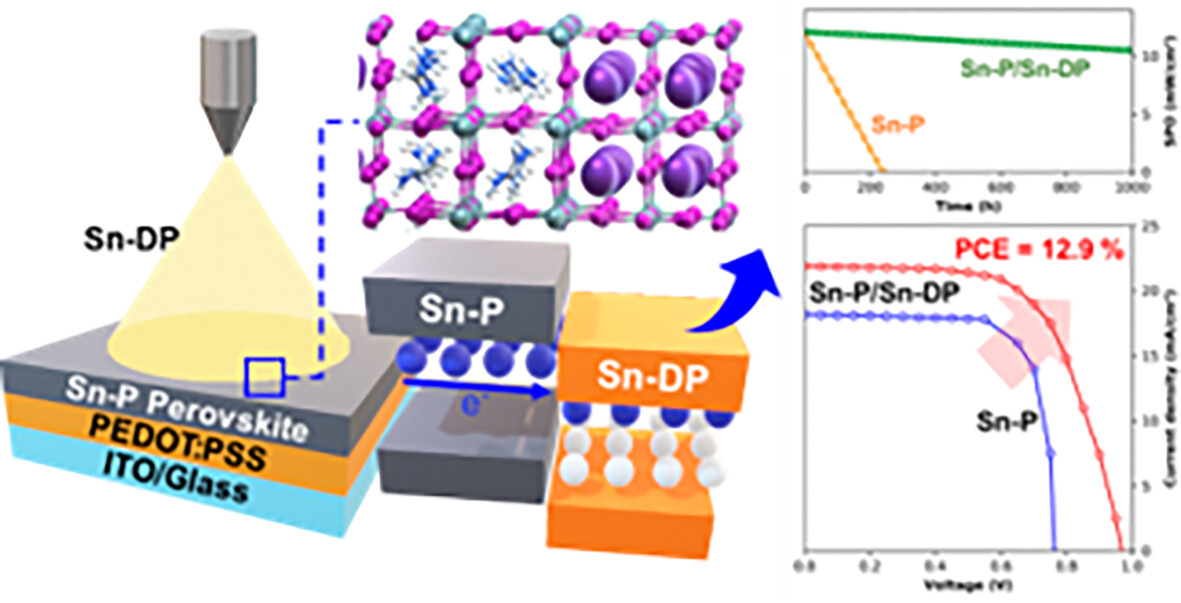
An orthogonal solution-processable spray-coating method forms an n-type Cs2SnI6 double perovskite (Sn-DP) layer on a PEA0.15FA0.85SnI3 perovskite layer (Sn-P), achieving 12.9% PCE and minimizing Voc loss to 0.38 V. This architecture enhances electron transport, reduces defects, and offers 1000-h stability under continuous illumination, promising efficient, stable tin-based lead-free solar cells.
PTAA-infiltrated thin-walled carbon nanotube electrode with hidden encapsulation for perovskite solar cells
- First Published: 30 October 2024
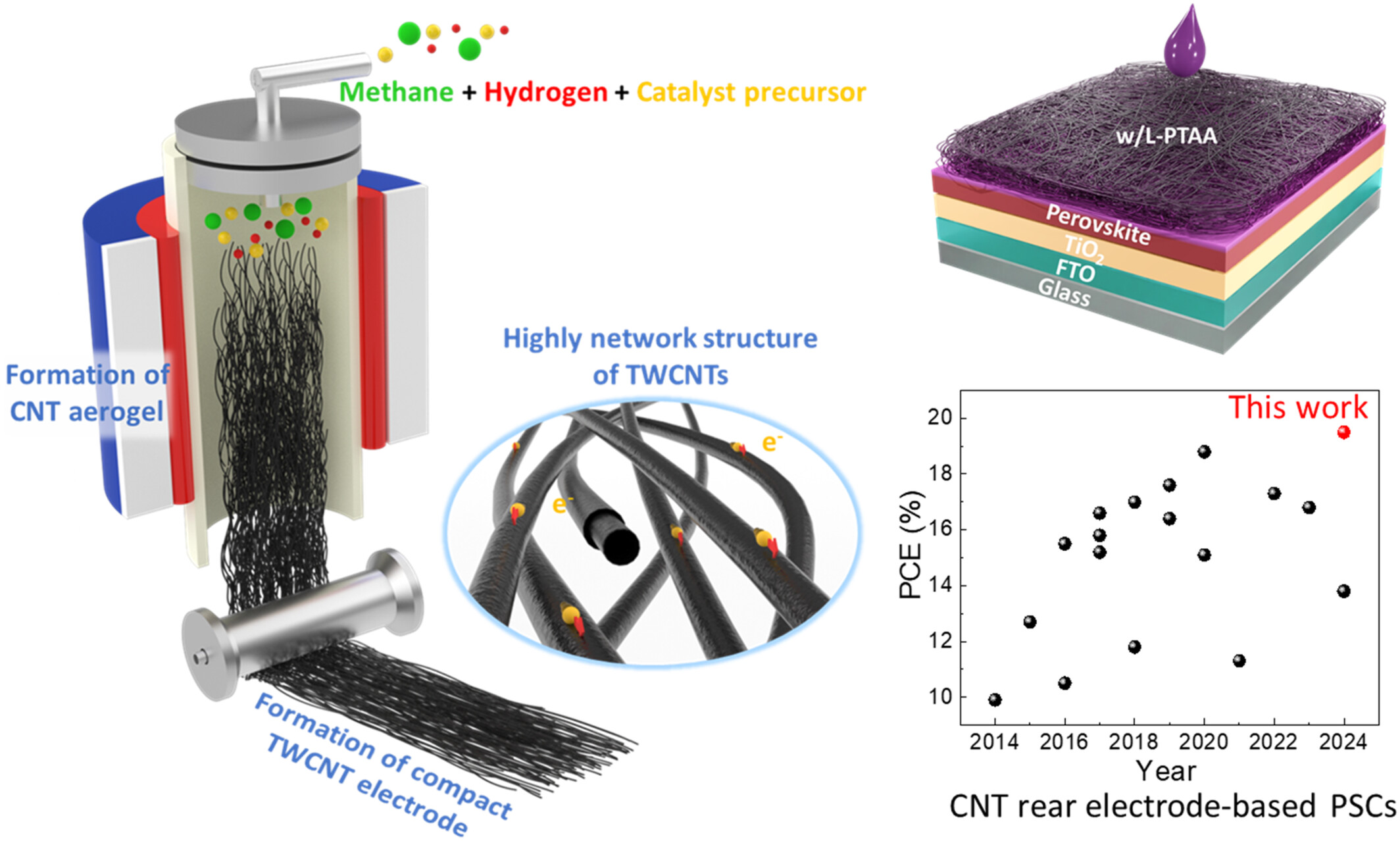
Thin-walled carbon nanotubes (TWCNT) were synthesized and assemblies demonstrated superior electric characteristics for perovskite solar cells (PSCs). We introduced low-molecular-weight PTAA infiltration into TWCNT electrodes to fulfill the porosity and modify the interface between TWCNT and perovskite layer. Furthermore, a new design of TWCNT rear electrode hidden encapsulation technology enables the demonstration of the stable PSCs.
Sustainable Approaches to Address Lead Toxicity in Halide Perovskite Solar Cells: A Review of Lead Encapsulation and Recycling Solutions
- First Published: 07 January 2025

The use of toxic lead in high-efficiency perovskite photovoltaics raises significant sustainability concerns, particularly due to the risk of environmental contamination from lead leakage. Establishing sustainable lead management approaches, such as lead encapsulation and lead recycling, is crucial for minimizing lead's environmental impact and advancing the commercialization of perovskite photovoltaic materials.
Toward Sustainable Perovskite Solar Cells: From Lead-Free Materials to Environmental Concerns and Mitigation Strategies
- First Published: 19 February 2025
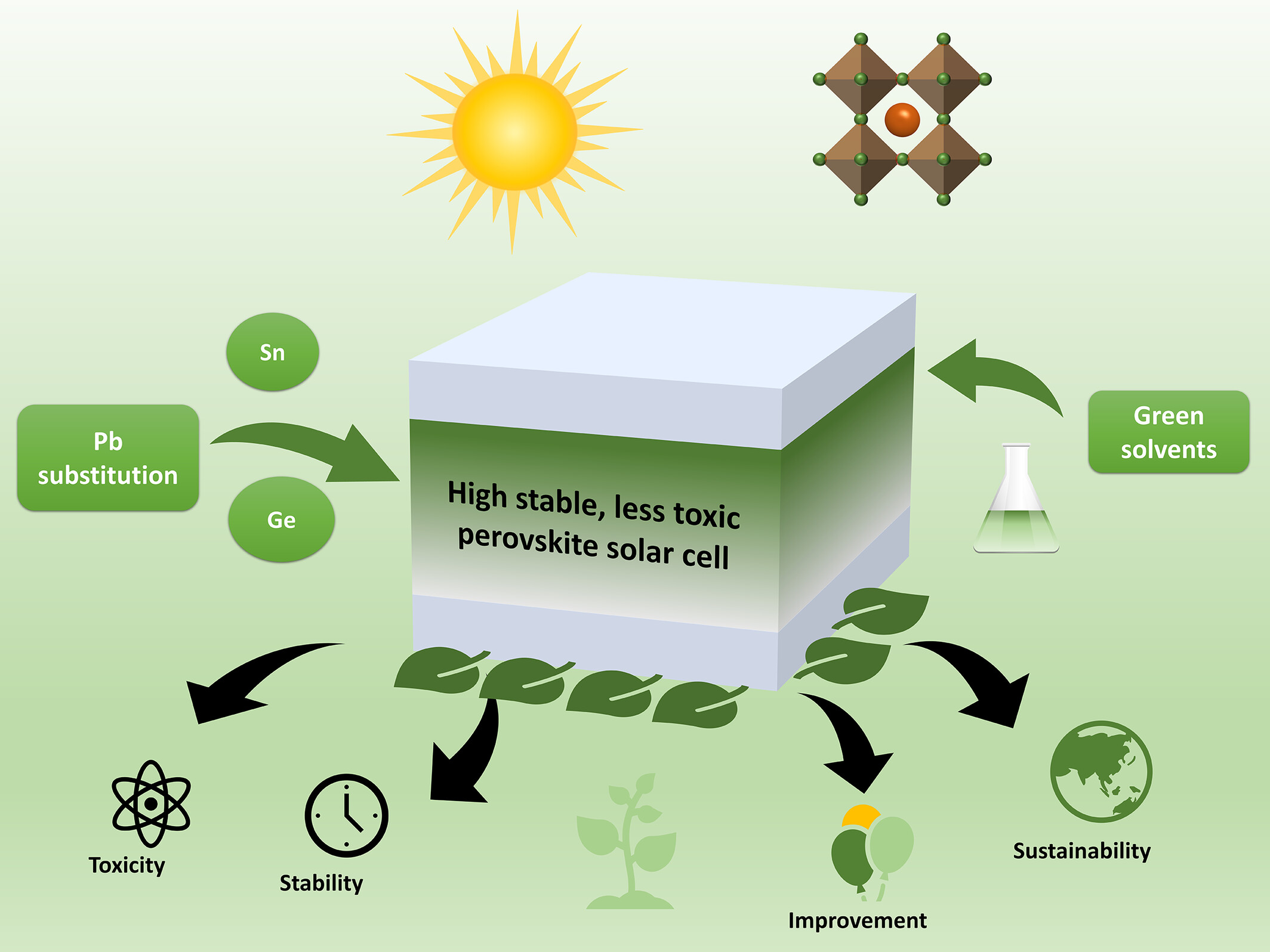
This review explores lead-free alternatives such as Sn and Ge, environmentally friendly solvents, and green manufacturing processes for sustainable perovskite solar cells. Key strategies to enhance stability, minimize toxicity, and improve performance are discussed to guide the future of environmentally responsible photovoltaics.




